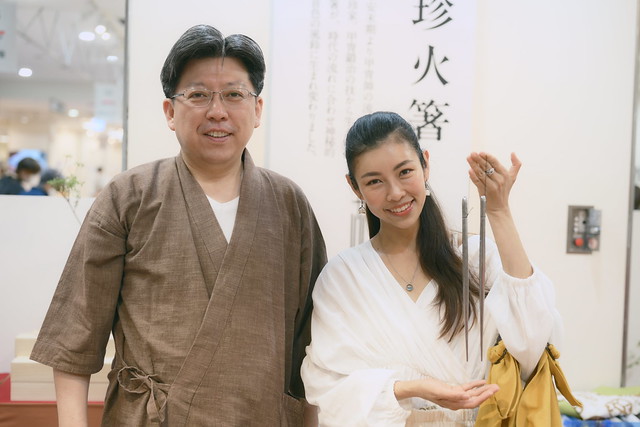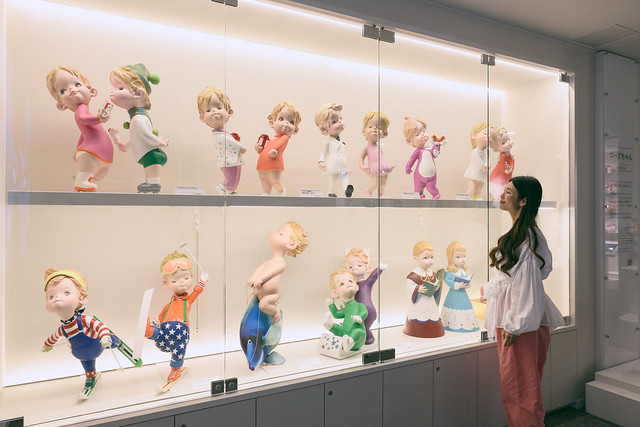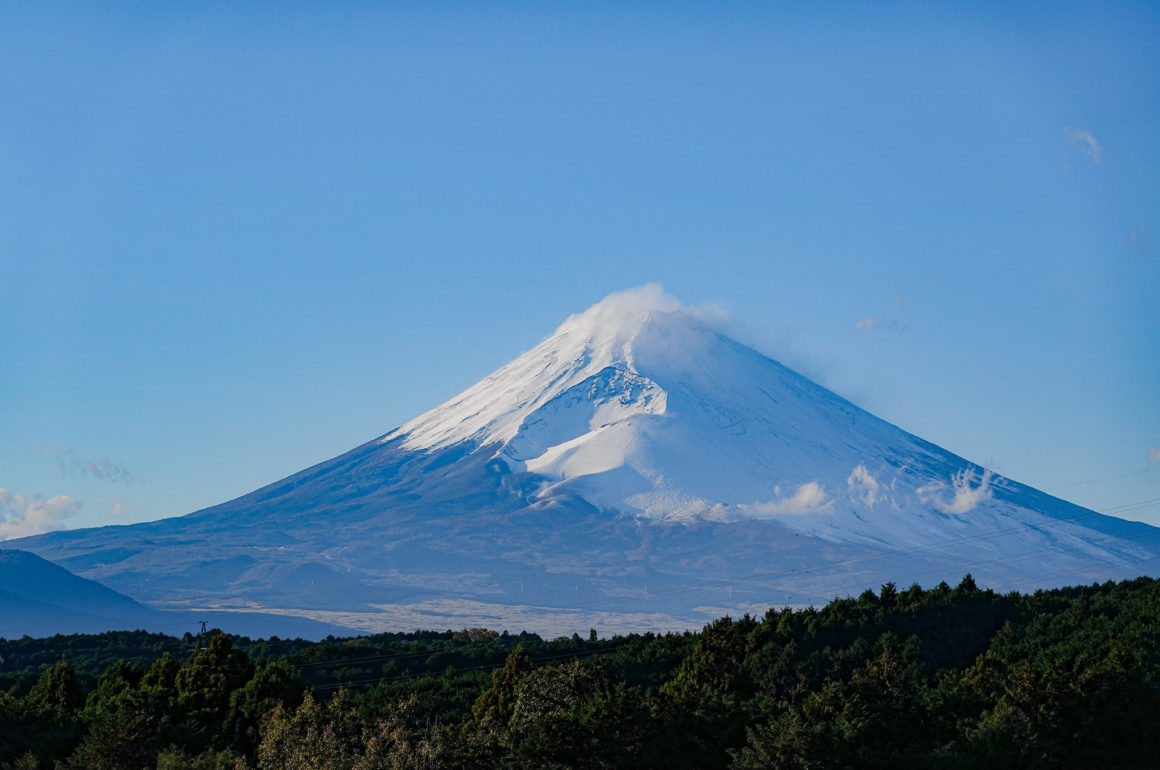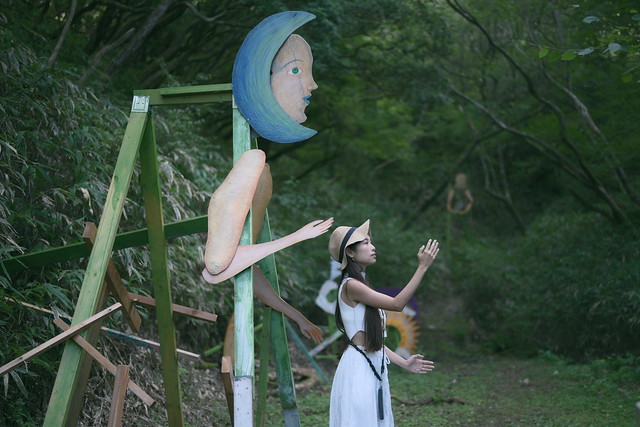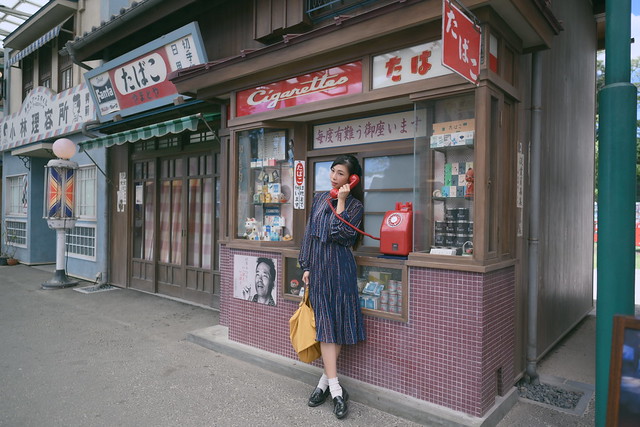
Wakayama Prefecture was one of my least travelled prefectures.

While many are familiar with the travel brochure cliches of Osaka, Kyoto and Nara; Wakayama, actually also a prefecture in the Kansai Region remains under the radar of mainstream tourists.
Today, I will be introducing various attractions of this spectacularly underrated prefecture for those who are craving for an authentic experience that’s off the classic tourist-filled golden route.
Access:
Wakayama Prefecture is facing the Pacific Ocean, bordering neighbors Mie, Nara and Osaka. It occupies a large part of the Kii Peninsula.

The best way to access Wakayama is from Kansai International Airport if you fly internationally.
To get to the Wakayama Station which is located in the namesake capital city, it takes 45 mins from the airport and 1 hour from Osaka Station by train. I’d say it is pretty easy to access given its proximity to other major cities in the region.
However, some of the most delicious cuts of the prefecture lie deep within the Kii mountain range. While it is not impossible to make your way around on public transports, I reckon self-driving will give you the best experience in terms of exploring the depth of this spiritual sanctuary of Japan.
FRUIT KINGDOM

Blessed with a mild climate, Wakayama gives birth to some of Japan’s finest fruits.
Nicknamed the Fruit Kingdom, Wakayama produces more mikan (mandarins) and persimmons than any other prefecture in Japan. I visited the prefecture last week in November and it was impossible to drive a minute in the suburb without seeing tangerine dots of luscious fruits lining the streets all the way.
Kinosato Mekkemon Farmer’s Market
“Michi-no-eki“, or loosely defined as farmer’s markets in Japan is always on my must-visit list wherever I go.

With the aisle brimming with freshly delivered fruits, vegetables, local tidbits and even handicrafts, visiting michi-no-eki is one of the most fun ways to get to experience everyday life like a local.
Mekkemon has an overwhelming varieties of mikan and persimmons in season, sold at insanely low prices. A fine box of 15~20 persimmon or so cost only JPY850. I can imagine picking up Tokyoites’ dropped jaws on the floor.
📍 Kinokawa City
Kannonyama Fruits Garden

I have actually been to Kannonyama Fruit Parlour in Ginza and Omotesando in Tokyo for their famous fruit parfaits and shaved ice (in summer time), prior to visiting their birthplace here in Wakayama established more than 100 years ago, run by the 5th and 6th generation owners.

Other than a mouth watering selection of seasonal fruit parfaits and other fruity desserts, you may also visit their orchards surrounding the facility for fruits picking, and sample the freshest harvest right from tree branches!
📍 Kinokawa City
Kushigaki-no-sato Shigo

The sky of Taira Settlement is dotted in bright orange, a really curious sight to behold comes November.
These are “kushigaki”. Kushi means skewer and kaki means persimmon. This strange but stunning vista of can be observed in Katsuragi Town, located at the foot of Koyasan in autumn season.

These persimmons are hung on a skewer and let sun-dried outdoor. Rather than turning into a yummy snack, kushigaki is actually used as a decoration for the Japanese new year. And Wakayama Prefecture produces over 90% of Japan’s kushigaki.
In the first half of November, you can enjoy this unique scene in the settlements, but note that this is not a tourist spot but residential area. While you are welcome to take photos, be mindful not to intrude the privacy of the farmers and residents.
📍Katsuragi Town
Access: Public transport is sparse, best to self-drive
KOYASAN

Koyasan (高野山), despite the kanji “山” which means mountain in Japanese, is actually not a mountain. Although sometimes commonly referred as “Mt Koya”, Koyasan is actually a temple town surrounded by 8 peaks, and has served as one of Japan’s most important Buddhism monastic centers for over 1200 years.

You will hear the name “Kobo Daishi” (弘法大師) a lot, that’s the posthumous name for monk Kukai, who founded Japan’s Shingon Buddhism.
Koyasan makes a truly memorable destination whether you are here for pilgrimage or sightseeing.
Temple Lodging
Ever want to try staying over at a temple lodge but feel intimidated?
There are 52 temples in Koyasan that are “shukubo” – temples that offer lodging for guests. Despite being one of the most sacred sites in Japan, I was so surprised that every temple and facility welcomes visitors with such a warm, open heart regardless of their nationality, belief and identity. Even the monks are smiley and humorous!

Ekoin Temple was the shukubo that I stayed the night at, and I can see instantly why it is incredibly popular with international tourists. The monks and staff are very used to international guests, so rest assured you will be well taken care of without language barrier.

This was my room, with a gorgeous view of autumn foliage.

If you bank balance allows you to splurge, I highly recommend their suite which is beyond luxurious–you even get to have your own zen garden!

“Shojin Ryori”, or the Buddhist cuisine in Japan is one of the highlights of temple stay. While one may have the image of monk meals being rather frugal, Japan’s Shojin Ryori often exceeds expectation, impressing guests with its richness in variety and delicate flavors.

The room I dined in had a rather bizarre but interesting painting on the sliding doors. One can admire Ekoin’s effort to merge austerity with creativity harmoniously.

If you are an early bird, don’t miss our their morning service conducted at the prayer hall to witness firsthand the monastic life of Shingon Buddhism.
What I love most about Ekoin, and in fact, Koyasan in general, is how everyone is incredibly friendly, and you are allowed to take photos in most spiritual places (except a few sacred spots where photography is clearly prohibited).

For example, I thoroughly enjoyed the “Gomadaki”, a fire ritual accompanied by powerful taiko drumming and an intense heart sutra, and was able to capture this precious moment to share it with you guys.

Don’t forget your Goshuin stamp before you leave.
Okuno-in
Just a short walk away from Ekoin Temple is the very spot many on a spiritual journey come here for–Okuno-in.
This may sound creepy to many, but I braced myself to walk the 2km path of tombstones into Okuno-in alone, which leads to the most sacred spot of Koyasan – Monk Kukai’s mausoleum. It was a very illuminating experience, in all quietude.

The starry night sky was a bonus.

In Japan, cemetery visiting is common and not a taboo, and here at Okuno-in, you can walk the path lined with century-old cedars and over 200,000 gravestones including tributes to great historical figures, feudal lords, monks of other sects of Buddhism and even fallen enemy combatants. This goes to show how inclusive Koyasan is to all worldly differences, and that all lives can coexist in harmony.

If you prefer, do visit it in day time and witness the “Shojinku” (#生身供) ritual, where monks carry the meal that is offered to Kukai, who is believed to be in an eternal meditation in the inner sanctum.
More to see in Koyasan

The “Danjo Garan”, is a sacred temple complex founded by Kukai as a place to study Shingon Buddhism. You will come across this iconic pagoda called the “Konpon Daito”, and I recommend you go take a look inside at the unique three-dimensional mandala made of impressive statues and brilliant paintings on the walls and pillars.

A short walk away brings you to Kongobu-ji Temple, the head temple of Koyasan. The highlight for me was Banryutei garden, a splendid rock garden that boasts to be the largest in Japan.

For lunch, we treated ourselves to vegetarian Shojin Curry at Cafe Shizuku inside of Koyasan Digital Art Museum.
📍Koya Town
Access: From Kansai Airport, take the train to Gokurakubashi Station (transit needed), and then the cable car up to Koyasan Station.
KUMANO KODO
The Kumano region is nothing short of stellar when it comes to attractions that are both historically rich and postcard-worthy.
It is home to Kumano Kodo, a pilgrimage route with over 1000 years of history; Kumano Nachi Taisha, which is likely the most iconic spot of Wakayama Prefecture; and together with Nachisan Seiganto-ji Temple, it makes up part of the “Sacred Sites and Pilgrimage Routes in the Kii Mountain Range”.

For many, trekking the Kumano Kodo Pilgrimage Routes is out of the question, for covering the full trail takes the best part of a week even for experienced hikers. However that doesn’t mean you cannot enjoy a slice of this sacred pilgrimage on a shortcut.

The TLDW (too long didn’t walk) version of Kumano Kodo would be to walk up Daimon-zaka, a perfect way to experience Kumano Kodo minus the daunting part. Rent and put on a Heian costume, and then walk the cobblestone path flanked with ancient trees for as long or as short as you like. Barely 1km later you will arrive at Nachi Taisha.

Daimonzaka Chaya, a humble tea house where you could rent the Heian costumes.

With the incredibly friendly staff who will magically transform you back to few centuries ago by putting the Heian costume on you in just 5 minutes. Prices are incredibly affordable too, starting from just JPY2,000 for an hour.

I finally made it, for the first time in my life, to Kumano Nachi Taisha, one of the three great Kumano shrines. The object of worship is actually the highest waterfall in Japan—the magnificent Nachi Waterfall itself.
Interestingly, the picture-perfect pagoda next to the waterfall you have seen earlier is actually part of Nachisan Seigantoji Temple, which is located right next to Naichi Taisha.

This goes to show how the Kumano faith is the epitome of religious syncretism called “Shinbutsu Shugo” (#神仏習合), where the indigenous Shintoism and Buddhism are merged and where the Kami and Buddhas are worshipped side by side. This is also one of the reasons why I love Japan so much.
📍Nachi-Katsuura Town
Access: Nearest station is JR Kii-Katsuura, and from then on it will be bus rides to various destinations.
KATSUURA
Next up, we are moving our way to Katsuura, a coastal hot spring town where you can relax after a long walk or hiking (if any!).
Hotel Urashima Resort & Spa

If you come to Katsuura, I recommend to stay the night at this unique hotel where you will access by ferry!

Check out “space walker”, an escalator which has the biggest difference elevation in Japan, measuring 154m from top to bottom. That’s like hiking a small mountain! Well, we are just glad we didn’t have to climb all the way up.
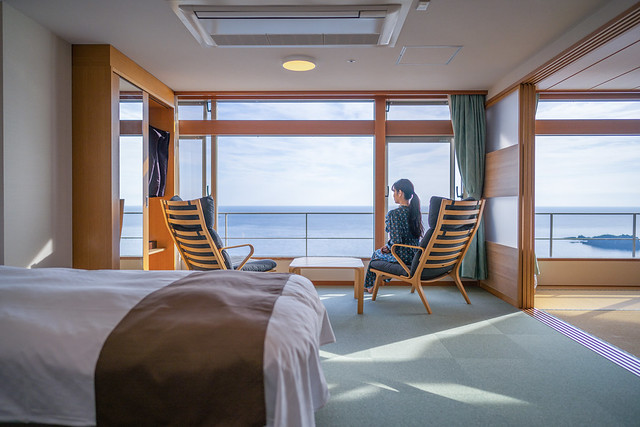
My room is surrounded with clear windows, and you can observe the sunrise if you can crawl out of bed early morning. Or… you can just admire it in your bed!

Scrumptious dinner that is half buffet half course meal. Be sure to come hungry!

(photo taken from Hotel Urashima’s website)
One of the most unique features of Hotel Urashima is the cavernous natural hot spring it is famous for. There are not just one, but five different public baths, both indoor and open-aired. Soak to your heart’s content and relax into the wonders of nature.

The Noroshi garden and observatory at the grounds of Sanjokan, an annex of Hotel Urashima where I stayed. There’s even a small Inari Shrine within the compound!

📍Nachi-Katsuura Town
Access: From JR Kii-Katsuura, walk 6 minutes to the Hotel Urashima Ferry Dock and take the ferry over.
Nachi Katsuura Fishing Port
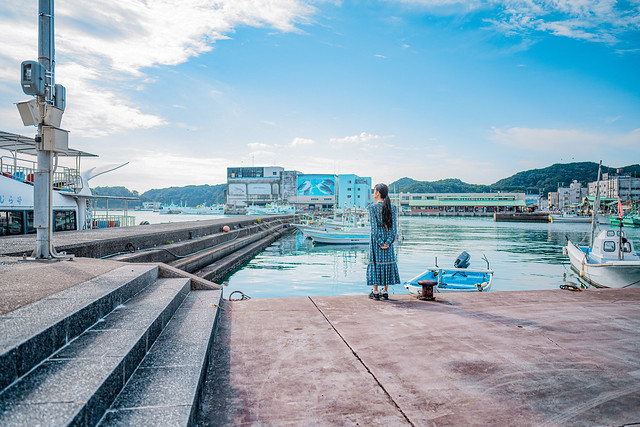
Before you leave Katsuura, remember to drop by Nachi Katsuura Fishing Port just a short distance from JR Kii Katsuura Station.

“Nigiwai Ichiba”, a market featuring a few eateries and souvenir shops where you can grab a quick bite before your journey onwards.
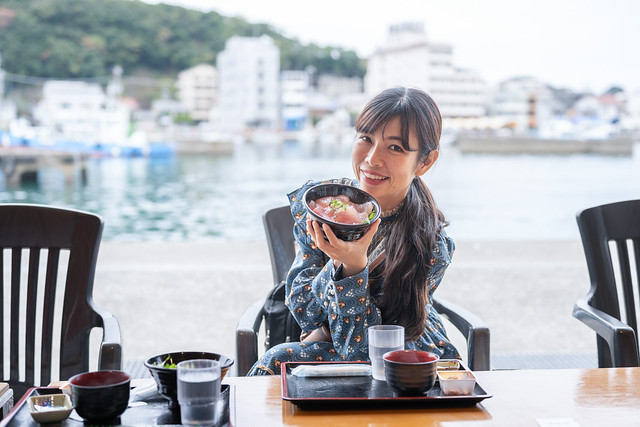
You cannot leave Katsuura without trying their tuna! This tuna bowl, made of fresh, non-frozen tuna is just the right size to fill your tummy up, leaving just enough space for desserts and snacks.
📍Nachi-Katsuura Town
Access: a short walk from JR Kii-Katsuura
KUSHIMOTO
Hashigui-Iwa Rock

Another photogenic spot in Wakayama is Hashigui-iwa Rocks, a group of gigantic pillar-like rock formation at the southernmost edge of Kii Peninsula.
Legend has it that Monk Kukai attempted to built a bridge connecting mainland to Kii Oshima island by hurling massive rocks into the ocean but was hindered by an ogre and was unsuccessful. What remains are these curiously shaped rocks.

You can walk along the beach, and take stunning photos of reflections of the rocks when the waters are calm.
Although not a major tourist town, it is worth stopping by if you drive. We made it our snack stop on the way back to Wakayama City, but ended up spending too much time taking photos because it was just too gorgeous.
📍: Kushimoto Town
Access: Just a 1-min walk from Hashigui-Iwa Rock Station by bus, or 20-min walk from JR Kushimoto Station.
Nakano BC Brewery
This spot wasn’t on our itinerary, but I reckon many of my fellow Malaysians and Singaporeans love umeshu (plum liquor), so I am introducing this spot that I visited back in 2019.

What’s amazing about Nakano BC is that this sake brewery comes with a beautiful Japanese Garden.

For those interested, you can sign up for brewery tour, sake tasting, and even try your hands making your own umeshu!

Me making my very first umeshu.

This bottle is still sitting back in Malaysia, now it has become an aged umeshu haha.
📍: Nankai City
Access: 15-min walk from JR Nankai Station
Well, that is all for this article, hopefully it has piqued your interest in visiting this slice of unexplored Kansai Region. Come visit Wakayama Prefecture!
PS: If you enjoy this article or find it helpful, it would mean the world if you could help me support Japan by buying a daikon!


